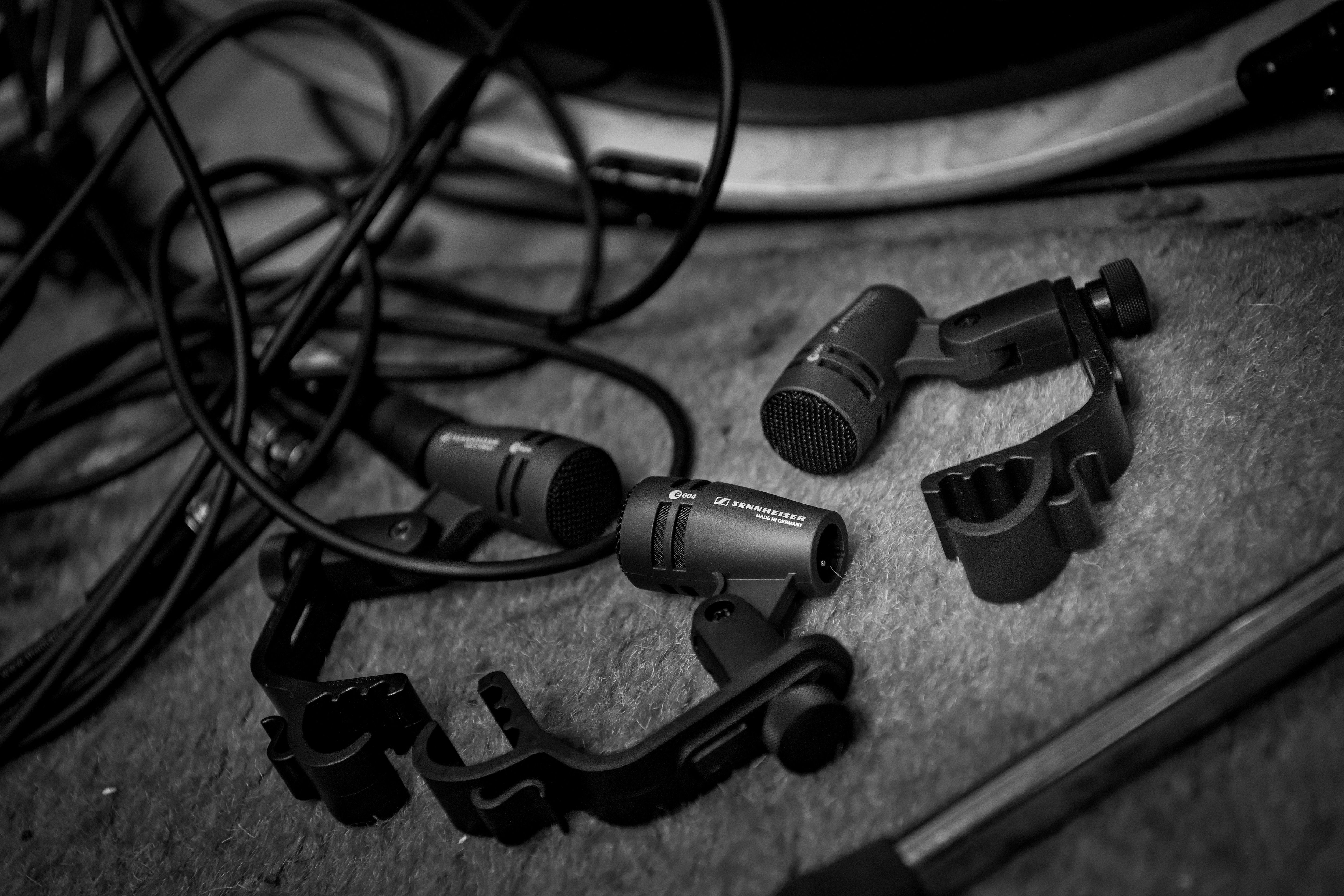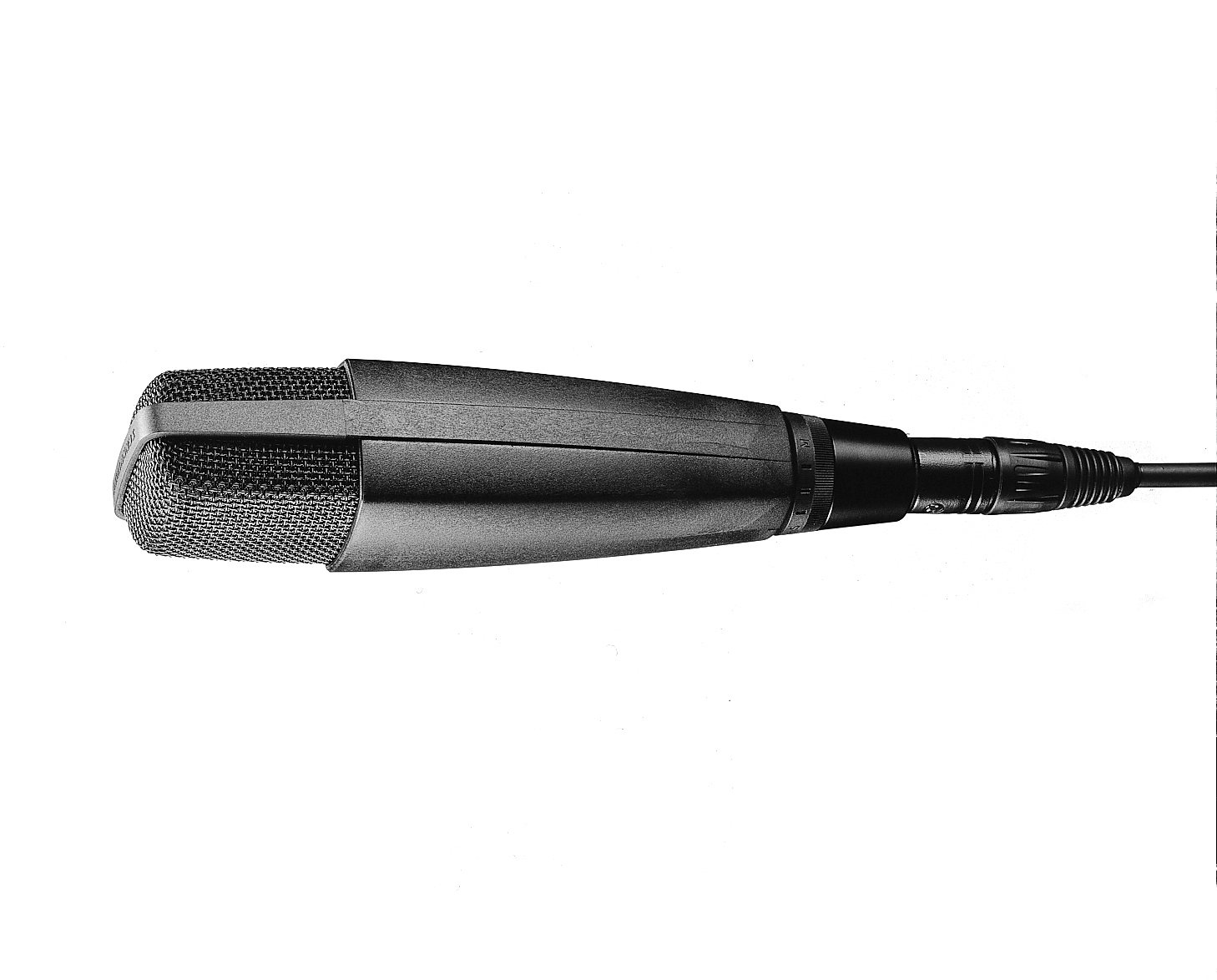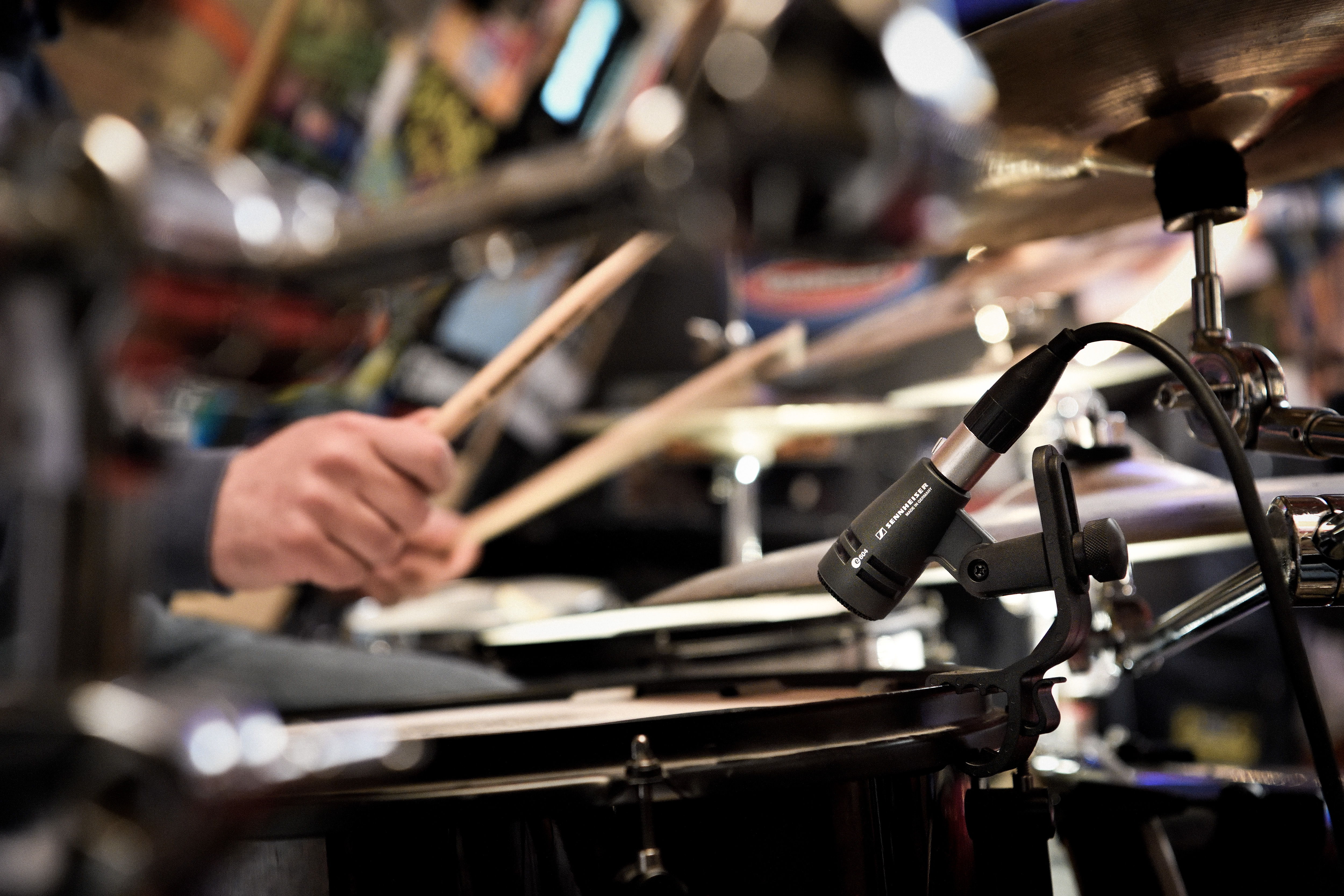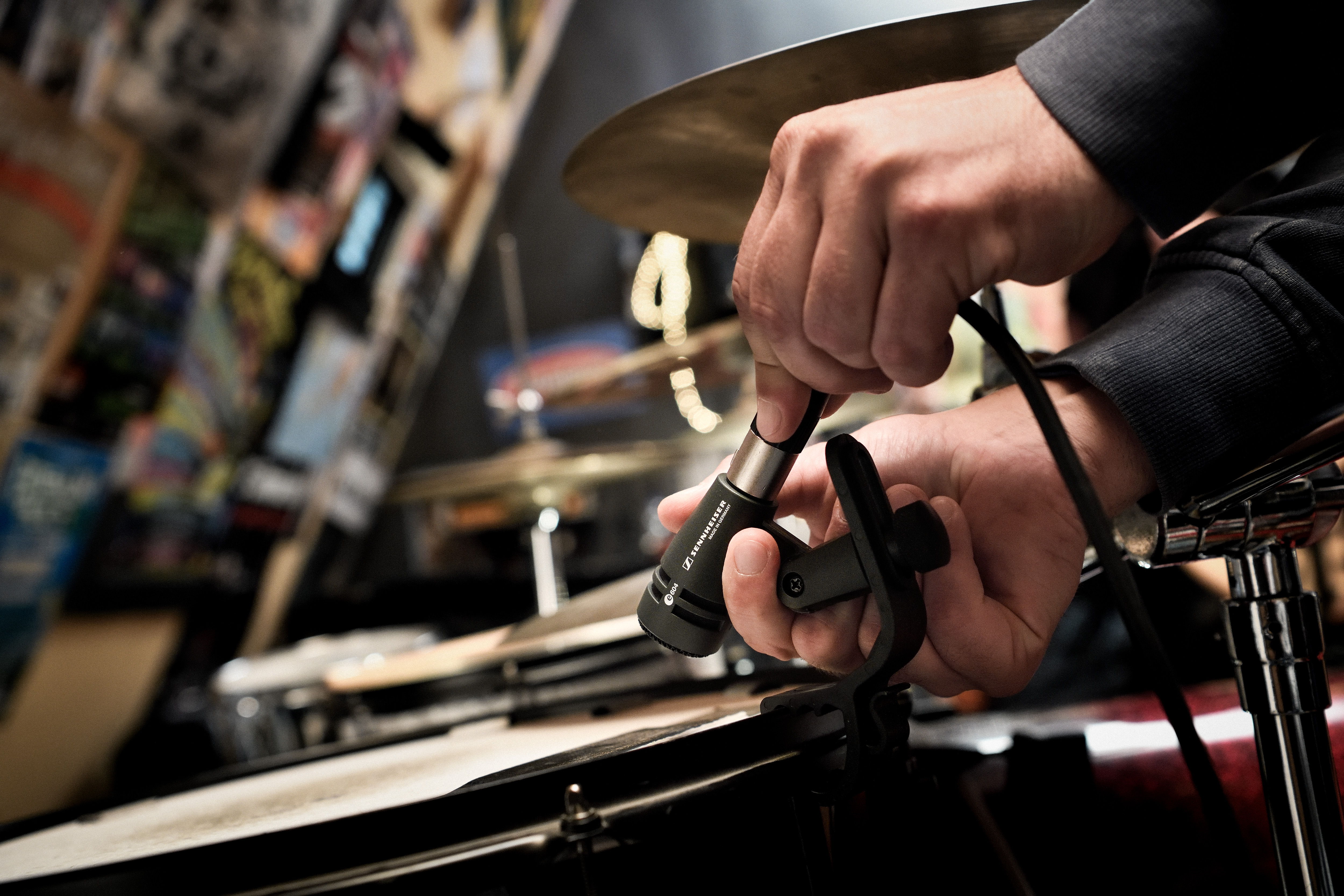The evolution e 604 – a specialist for toms and snares

July will see the evolution e 604 as Sennheiser’s Mic of the Month
Wedemark, 1 July 2018 – The e 604 will be Sennheiser’s Mic of the Month for July. The descendant of an evolution that started back in the 1960s, the little drum specialist offers intensities which elsewhere would be regarded as extras. Find out more about the history of this fearless drum companion and get valuable tips and tricks for its use – below or at https://www.happyevolution.com.
e 600/800 series: Within everyone’s budget – above the norm
At the end of the 1990s, the evolution series changed Sennheiser at all levels – from development through to sales and distribution. Whereas hitherto the German brand had been known for its – rather high-cost – broadcast and studio solutions, the engineers were now also developing microphones for live stages. How does one combine high standards, one’s own experience and the possibilities offered by automated production? The answer to this was demonstrated from 1998 onwards by the e 600 series instrument microphones and the vocal /speech microphones from the e 800 series. As a result, legendary but previously expensive prototypes from the MD series suddenly also became available at prices which – finally – were within the budget of a much wider group of the population. Here, “evolution” was not simply a name but a philosophy. Models whose performance people were not satisfied with were overhauled within a short space of time and reissued. Shortly afterwards the e 900 series arrived to crown the evolution range; these products provided workflow, sound and a robustness which also satisfied the very exacting demands of live performances.

The e 604 story
Sebastian Schmitz points to the frequency response curve, nods, and starts grinning. His facial expressions are reminiscent of those visible when he is wearing headphones and is pleased with what he is hearing. Very pleased. Schmitz is one of the product managers who have worked with the evolution series right from the first experimental set-up – and is a sound engineer. His finger taps the area at 2 kilohertz. “Here, this slight elevation upwards of 2,000 hertz – the upper mid-range and high frequencies are slightly emphasized. As a result, the e 604 provides you with a punchy sound from toms and snares, a sound which remains clear and open right down to the bass.”

Descendant of the legendary MD 421
And this is no surprise. Ultimately, the e 604 is following the example of the legendary MD 421, which revolutionized speech and music recordings in the 1960s. Its achievements then and now on the toms remain unforgotten today by bands big and small. Its nickname was appropriate back then and still applies today: “King of the tom mics”.
However: the MD 421 was not really that camera-friendly or visually appealing on toms or snares. The stands, the large design – none of this was very suitable for use on live or broadcasting stages. This gave rise to the MD 504: the first instrument-specific and camera-friendly, compact microphone from Sennheiser. “The idea was to construct only what was necessary around the capsule”, recalls developer Heinz Epping.

Extras and the most copied clamp in the world
Then by way of a further development, the e 604 was created. Compared with the MD 504, the XLR cable connection is more elegant. The glass fiber-reinforced plastic housing can easily take a few knocks during tours and recording sessions. The construction and transducer have been left unchanged; the sound is distinctive right into the maximum peak levels. Extras such as a hum compensation coil have also been retained. The coil protects the signal, by means of a phase-inverted, opposing field, from interference signals from other electrical equipment such as mains transformers, lighting electronics or dimmers. The real highlight, however, was and is the “MZH 604”, the shock-absorbent microphone mount clamp for the edge of the drum. It can be attached to any design, achieves greater proximity to the drumhead and can be freely positioned according to sound and preference. What in the past quickly became complicated and cramped with microphone tripod and cable duct was now finally straightforward. It’s not for nothing that the mount clamp is among Sennheiser’s most copied industrial designs.

But what, then, distinguishes the e 604 from the more professional 904? The XLR connector of the e 904 is gold-plated, has been rotated by 90 degrees and thereby somewhat more convenient to handle. The housing is made from metal. In the frequency response curve, the “nose” upwards of 2,000 hertz is missing. The e 904 is very much more clearly part of an entire series which, since its set-up, has been delivering a very solid overall mix. “But this doesn’t change the strengths of the e 604,” says Schmitz. “Anyone who mikes their drum set properly for the first time will get an extremely dynamic sound and impact-resistant design.” And there is that smile again. As though he had the right mix in his ears. Just right.
Tips and tricks for the e 604 – Three details that upgrade your sound on toms and snares
The way in which the e 604 is arranged around toms and snares already makes a crucial contribution to the sound quality. Three tips for the first setup on toms and snares:
1 – Where does the microphone go?
A good question. Using the handy clip, the microphone is attached directly to the edge of the drum. In purely acoustic terms there is hardly any position which would be more or less suitable. Many of the positions in the lower semicircle (from the perspective of the drummer) are ruled out because the mic would simply be in the way of the sticks. Precisely where you place the mic depends on the set-up of your drum kit. Ensure that you can take a relaxed position while playing and that the cymbals cannot bump against connectors.
2 – Don’t keep your head down
The microphone head at the drum edge should not be oriented vertically at a 90-degree angle to the skin. In this position the mic doesn’t hear the impact but emphasizes the “singing” of the skin. In most applications, that is not the desired sound. To be able to record the “attack” sound well, align the microphone half way between the center and the edge (half of the radius). Here you will generally find a good compromise between “singing”, lingering sound and impact. If any doubt, of course, try it out and make a decision according to the style and the music.

3 – Keep it nice and low
The natural enemy of the tom is the cymbal above it – and the natural enemy of the snare is the hi-hat. Only from the point of view of miking, of course. The issue is the phenomenon of bleeding, that is to say undesirable components from neighboring sound waves. For this reason, it is recommended that the e 604 be brought down as near to the skin as possible rather than leaving it in the highest standard position. In this way, the ratio shifts to the benefit of the tom and the snare.


